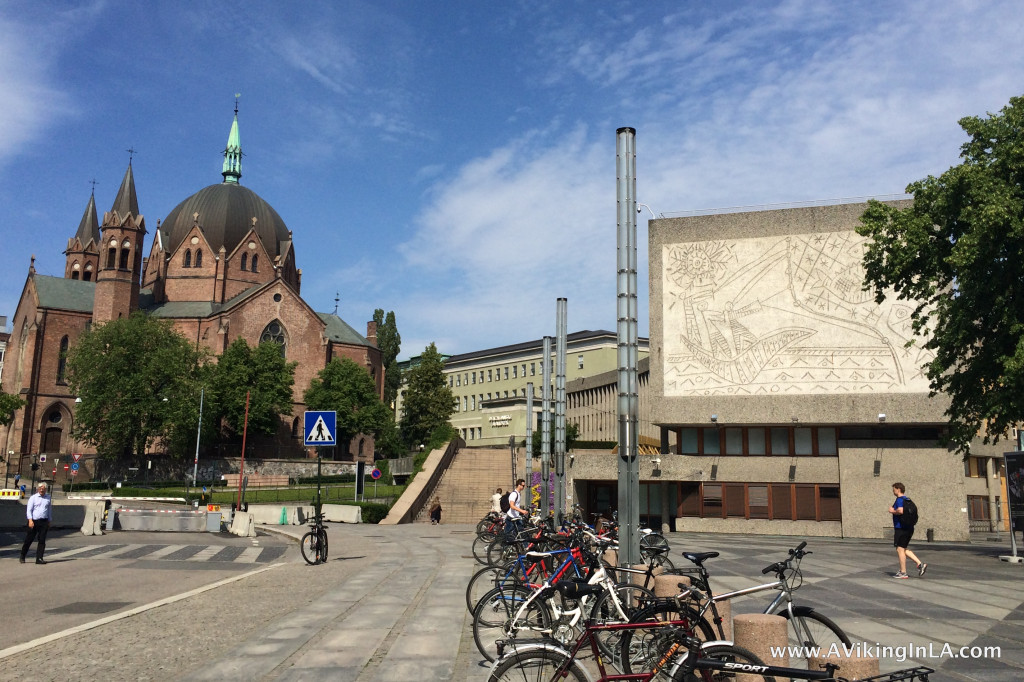 My husband and I were leisurely making our way by foot from the food hall Mathallen to the center of town to take the metro back home. I wasn’t very familiar with this part of Oslo. Suddenly, we found ourselves in the area pictured above. I didn’t know anything about it but thought the view worthy of a picture before moving on.
My husband and I were leisurely making our way by foot from the food hall Mathallen to the center of town to take the metro back home. I wasn’t very familiar with this part of Oslo. Suddenly, we found ourselves in the area pictured above. I didn’t know anything about it but thought the view worthy of a picture before moving on.
Once back in the States several weeks later and catching up on back issues of the Norwegian American Weekly newspaper, I suddenly saw a photo of the mural we’d seen on our walk. I quickly searched through my photos from the summer to look more closely at it.
The article was about the Norwegian artist Carl Nesjar who as it turns out had created the mural in 1970 based on a design by Pablo Picasso. Nesjar had passed away at the age of 94 on May 23, 2015. The mural is called “Fiskerne” (The Fishermen) and is on a government building known as the Y Block. (The church to the left is Trefoldighetskirken, or The Trinity Church, consecrated in 1858.) And now I understand why the street was blocked off and I could cross it so easily to take my picture—it was the government quarter targeted in the July 22, 2011, bombings. The Y Block along with the H Block next to it sustained heavy damage in the bombing.
As I learned from the Norwegian American Weekly July 3 article, Nesjar “was for many years Picasso’s chosen fabricator, the artist who took the master’s drawings and models and gave them physical form as immense public sculptures.” Nesjar and Picasso began working together in the 1950s and continued until Picasso’s death in 1973. Their collaboration resulted in many sculptures and building decorations around the world: Norway, Sweden, France, Spain, Israel, The Netherlands, and various university campuses in the USA (Princeton, MIT, and NYU).
There is another Picasso-designed, Nesjar-created mural called “Måken” (The Seagull) in the reception area of the Y Block. Sadly, the future of these Picasso/Nesjar murals is uncertain. There are discussions to demolish the building as part of a redevelopment plan for the government quarter. The murals would be secured and preserved, but there were no plans for them beyond that. There is public debate about the issue so we’ll see what eventually happens.
I wish I knew all this when we passed through the area this summer. I would have spent a little more time looking at the mural and taking it all in. I’m very grateful for coming across the article in the Norwegian American Weekly and having the chance to research Nesjar a little bit more. Now I have a much greater appreciation for that area for the next time we pass through.
